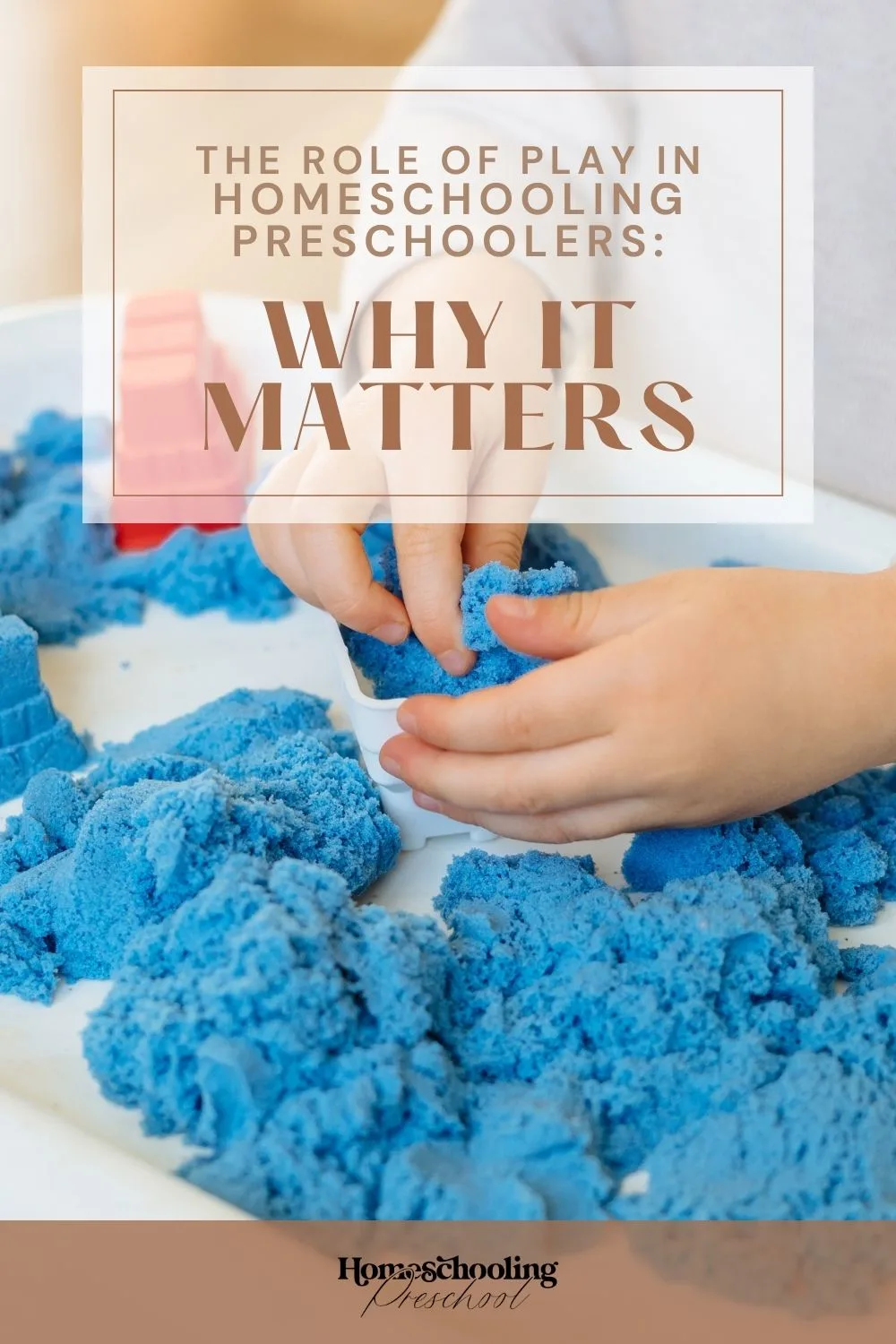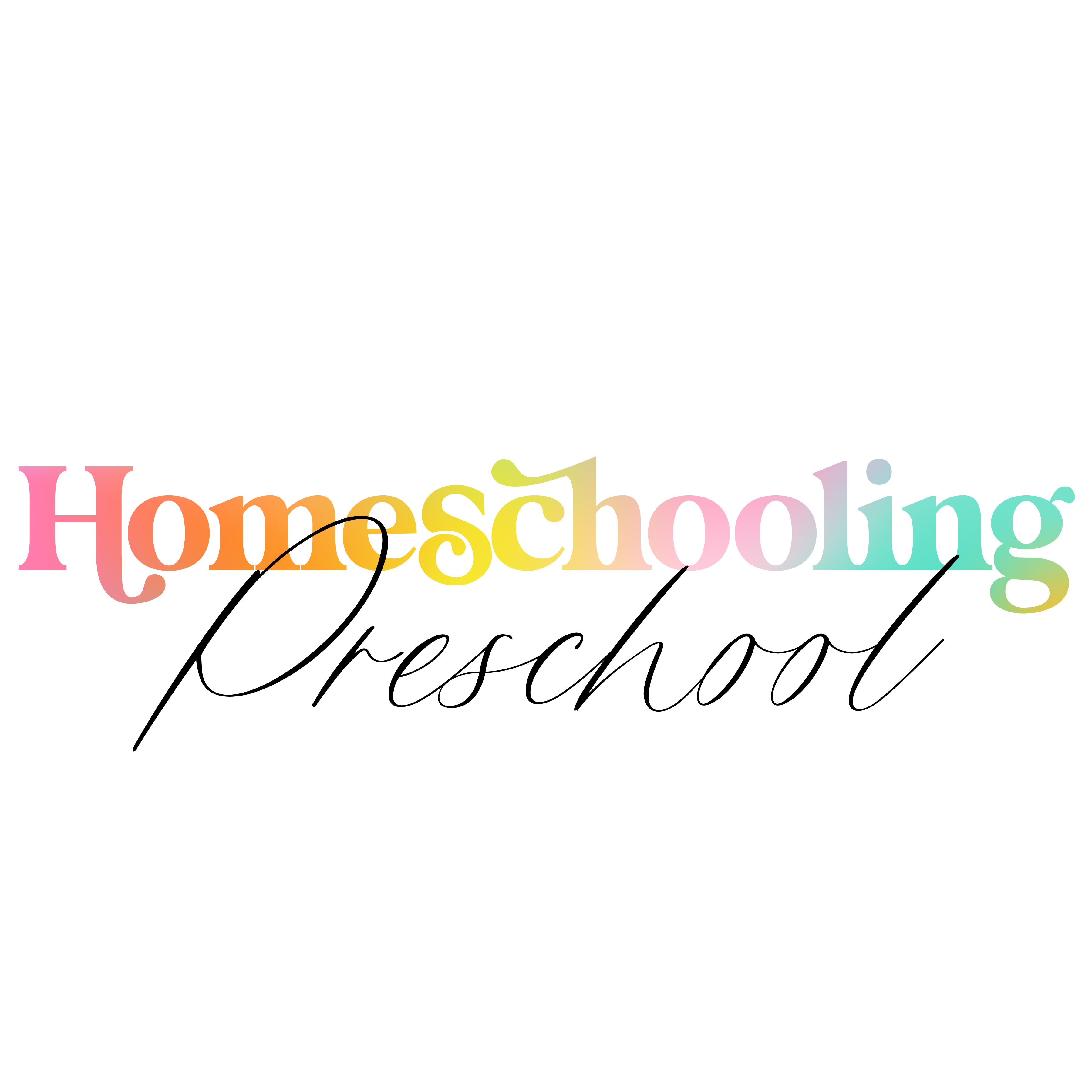As a parent who homeschooled my kids when they were preschoolers, I’ve come to realize the incredible value of play in the preschool daily routine.
Play is not just about keeping kids entertained; it’s a vital part of their learning and development.

Here are some fun and meaningful ways to sneak in learning and incorporate play into your homeschooling journey with your preschooler.
Because no matter what your homeschool goals are, play should always be a top priority!
1. Imaginative Play
Encourage imaginative play by setting up different “stations” in your home.
For example, create a pretend kitchen area with toy pots and pans (or real ones!) or a doctor’s office with stuffed animals as patients.
For holidays like Valentine’s Day, try setting up a mail station!
Let your child’s imagination run wild as they take on different roles and scenarios.
If you’re stuck for ideas, check out this list of dramatic play themes that can really work with just about anything you have on hand.
2. Outdoor Exploration
Take learning outside by going on nature walks and scavenger hunts.
Collect leaves, rocks, and other items to examine and discuss later at home.
You can also create an outdoor obstacle course or simply let your child run around and explore their surroundings.
My kids used to love impromptu obstacle courses around the park that we had across the street from our house when they were little!

This article may contain affiliate links to products that may help you when homeschooling preschool.
3. Art and Creativity
Set up an art corner with various materials like crayons, markers, paint, and playdough.
Encourage your child to express themselves through art, whether it’s drawing, sculpting, or making collages.
This allows them to develop fine motor skills and creativity.
And, if you are not an arts and crafts loving homeschool mama, consider taking things outside so that the mess happens outside and not at your dining room table!
4. Sensory Play
Create sensory bins filled with items like rice, beans, water, or sand for your child to explore through touch and manipulation.
Add scoops, funnels, and small toys for added engagement.
Sensory play stimulates the senses and enhances cognitive development; it’s also FUN!
Not sure what to put in a sensory bin? Here are some ideas for sensory bin fillers!
5. Storytelling and Dramatic Play
Read books together and act out the stories using props or costumes.
Encourage your child to retell the story in their own words or come up with alternative endings.
This fosters language development and creativity.
If your little learner doesn’t want to act, maybe he wants to create a puppet who can retell the story for him!

6. Music and Movement
Turn on some lively music and have a dance party together.
You can also introduce simple musical instruments like shakers or tambourines for your child to experiment with rhythm and sound.
Here’s a simple yarn tambourine that we made that lasted a long time and was a ton of fun to use!
The Power of Play
By integrating these playful activities into your homeschooling routine, you’re not only making learning enjoyable for your preschooler but also laying a strong foundation for their overall development.
Remember, play is the work of childhood (thank you, Mr. Rogers!), and it’s through play that children make sense of the world around them.
So, embrace the mess, the noise, and the creativity that comes with play, because it truly matters in shaping our little ones into curious, confident, and well-rounded individuals.
Remember, have fun with it!
